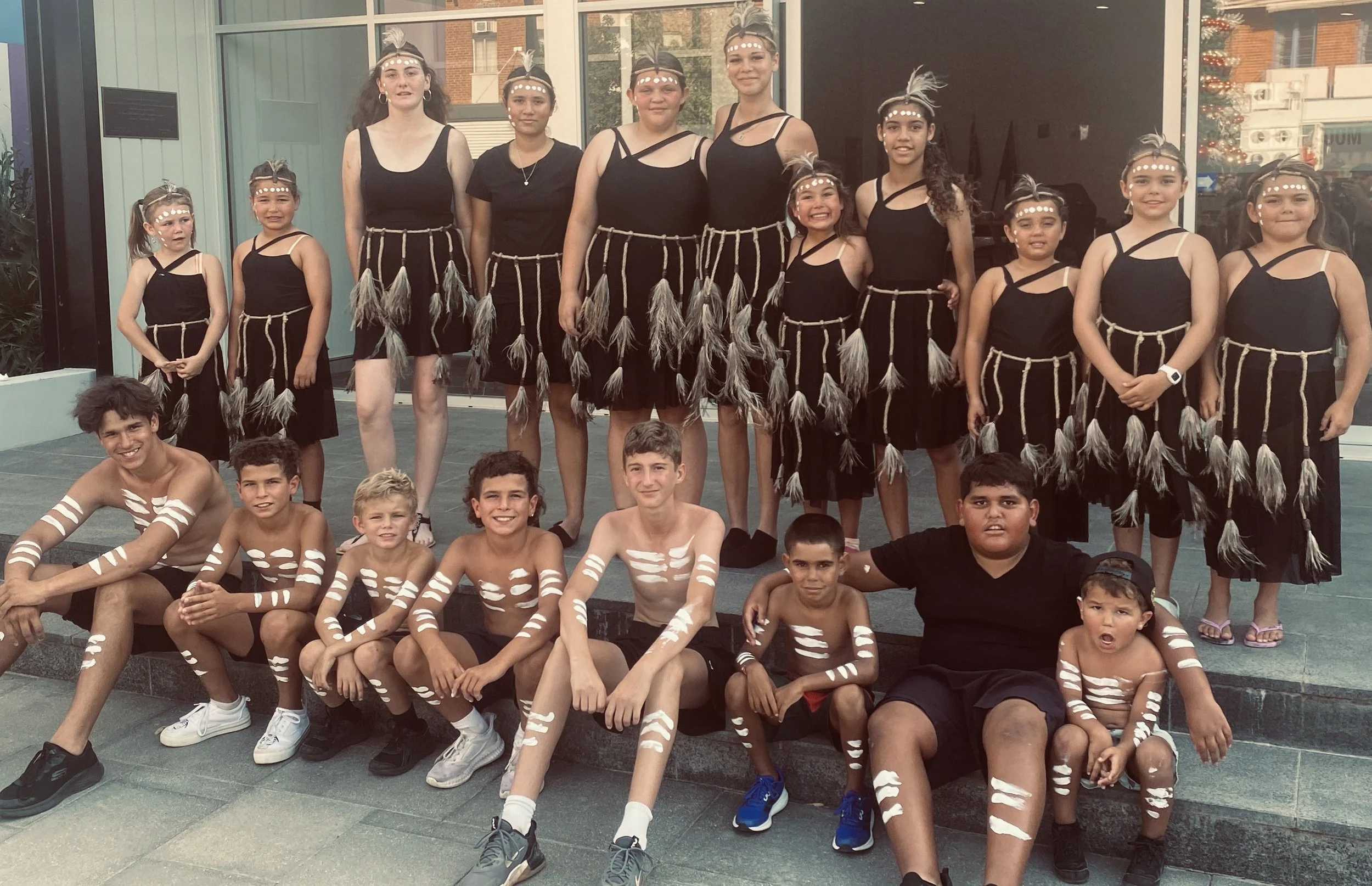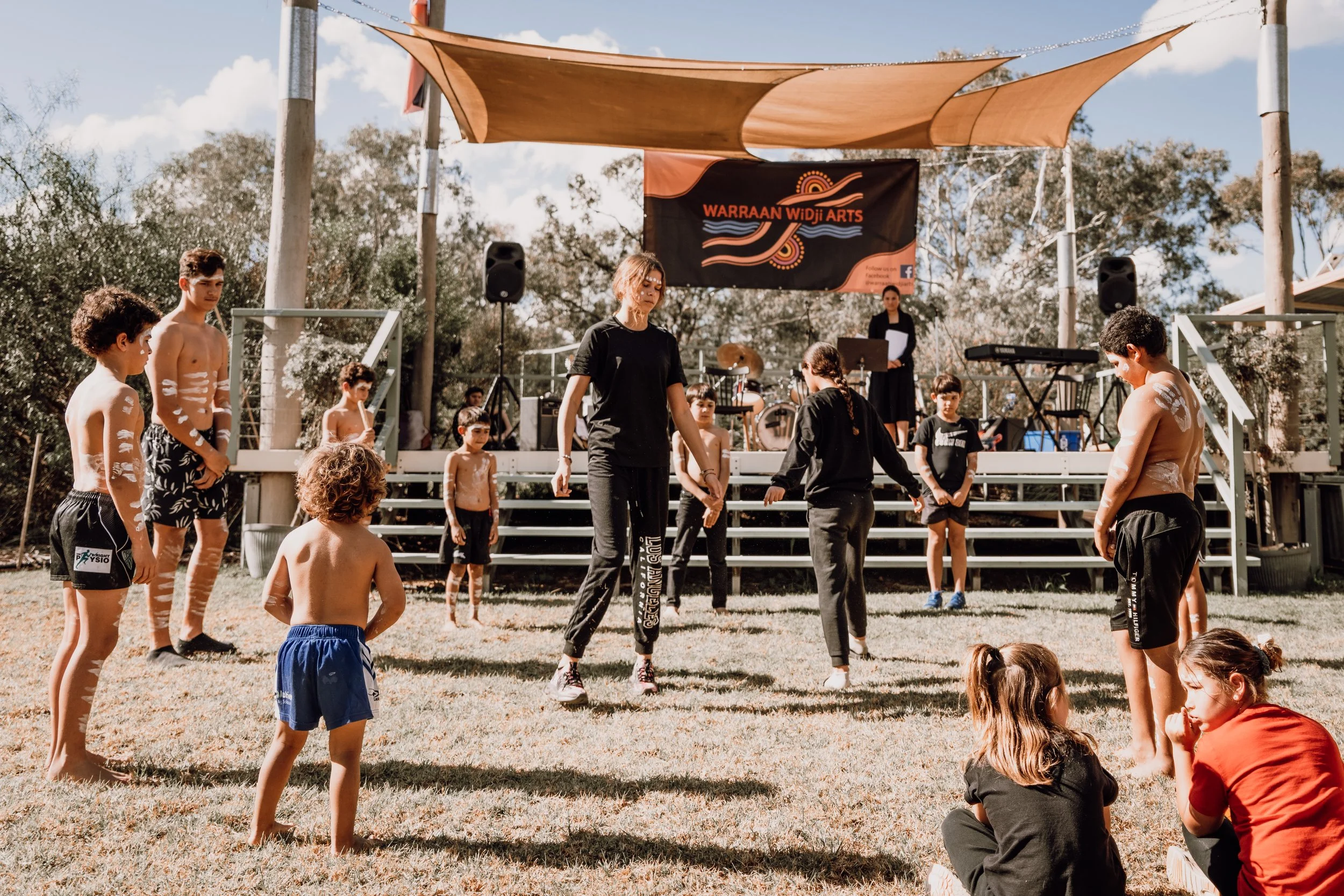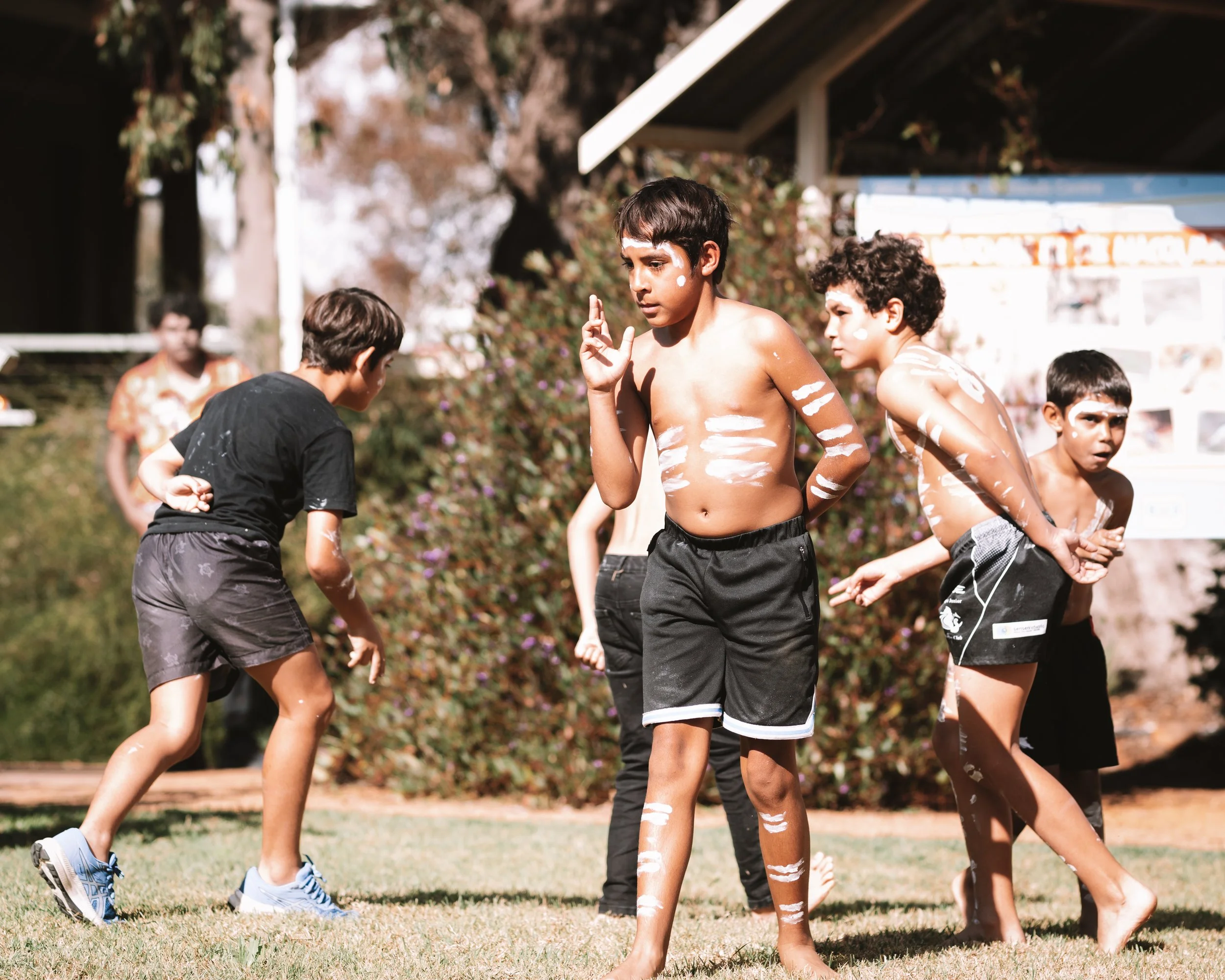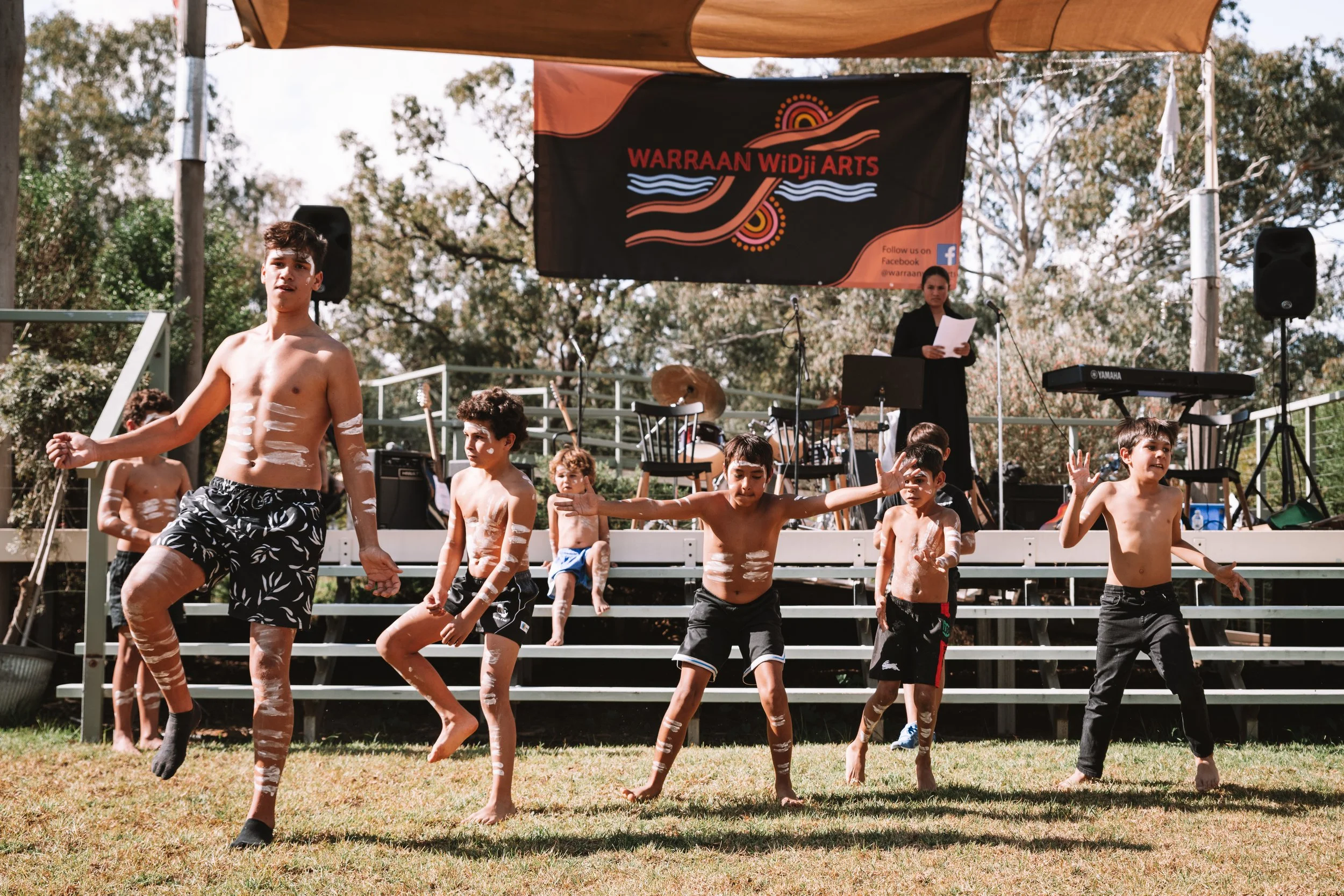Wayilwan Waga-y (Dance)
Wayilwan Dance ensemble ready to perform the Ngurri (Emu) Dance at Warren’s Christmas Street Party 2023
Baluwaa - doing respectfully
Hannah, Hayley and Charlie - “baluwaa”
Dance Workshops and Performances
For Our Elders NAIDOC concert, 6 August 2023, Gunimara Baluwaa (Respecting Mother Earth) dance on Wayilwan Country
Children and youth are invited to attend dance workshops every Tuesday after school. There is no minimum age for dancers.
WWA Wayilwan dancers choreograph their dances, inspired by Wayilwan ancestors and Wayilwan Country.
"It's about connecting to Country and respecting Country, Wayilwan Country, where we live" says choreographer Peter Mackay.
The dancers first performed in public at the inaugural WWA Buraay-gal dhiiyaan bula maliyaa-gal (WWA youth family and friends’) concert on November 26, 2022.
Peter said the girls' first dance performed in public was inspired by Louise Fuller, her birthday being November 26.
One of the girls’ dances gives respect to the dhigarrbila (echidna) as a Wayilwan totem. It is a powerful and moving dance.
Louise has left a beautiful legacy for the next generation of Wayilwan gamadhaliya-gal waga-ngindaay (girls dancer - the plural ‘gal’ is placed on the subject ‘girl’).
Peter explains that the boys honour and respect the girls as they dance.
Aunty Beth Wright assists with the application of the ochre on the girl dancers so that she can impart knowledge about the special Wayilwan meaning.
The boys perform the Guya (Fish) Dance. Wayilwan and other Nation groups were advanced aquaculturists and agriculturalists. The fish traps: Baiame’s Ngunnhu (Ngemba Nation - Wayilwan people helped to construct and maintain) and Budj Bim (Gunditjmara Nation) are testament to their skills. The majority of Wayilwan acquacultural and agricultural engineering feats, however, were destroyed after the English invasion as the English migrated inland.
Please click on the button above - Donate - to ensure our dance program can be provided free of charge for the next generation and grow Wayilwan cultural heritage preservation.
THANK YOU!
Girl dancers and singers have dot markings across the forehead.
Each dot represents the Wayilwan Nation's neighbouring Nations, those whose ancestors gathered for ceremony and trade on invitation at the Malayan-da Ngurra (Eagles Camp at the marshes) and Baiame’s Nghunnu (Fish Traps at Brewarrina) when food supplies were plentiful.
Three dots on the left cheek of each girls' face symbolises respect, responsibility and relationship.
Similarly, boy markings reflect local dance story meanings choreographed by Peter and inspired by Wayilwan ancestors.
Three markings represent respect, responsibility and relationship.
Each performance must be performed with these values in mind.
Acknowledgement: Aunty Beth Wright
The Guyu (Murray Cod ) dance is inspired by the many waterways on Wayilwan Country…
Provision from Gunimara (Mother Earth)
Ngurri (Emu) Dance
Yada Yana-y (Welcome) Dance








